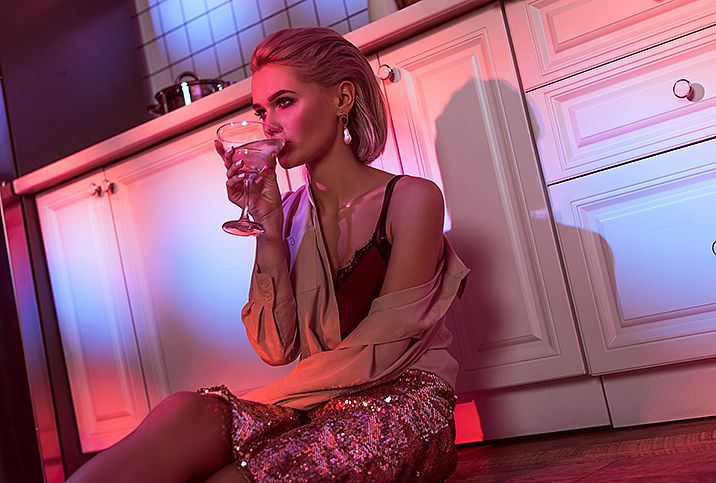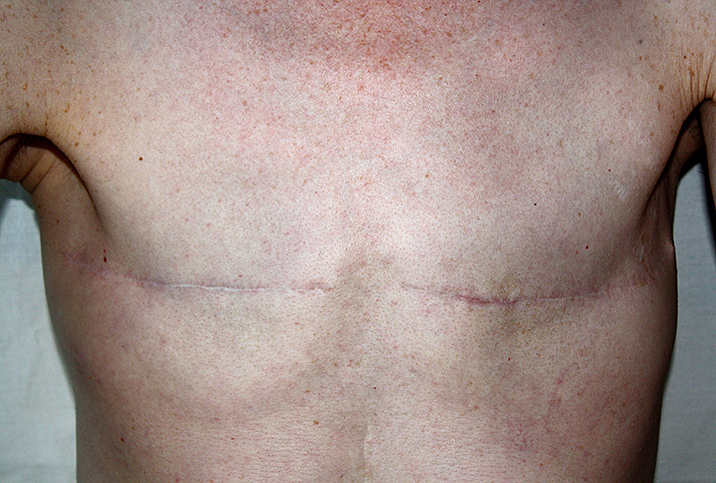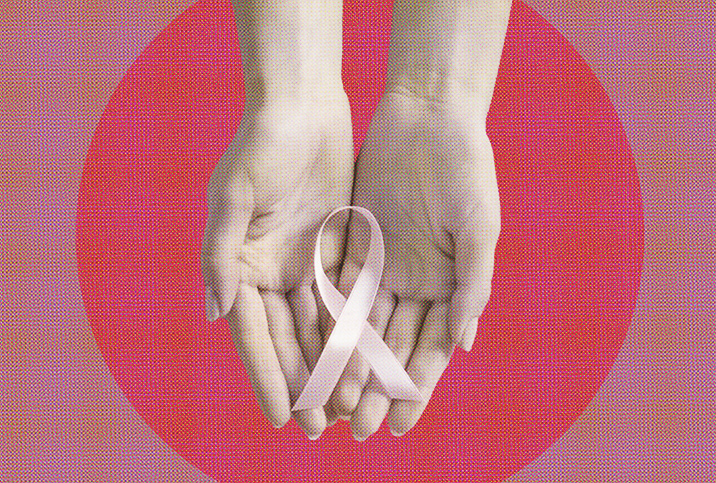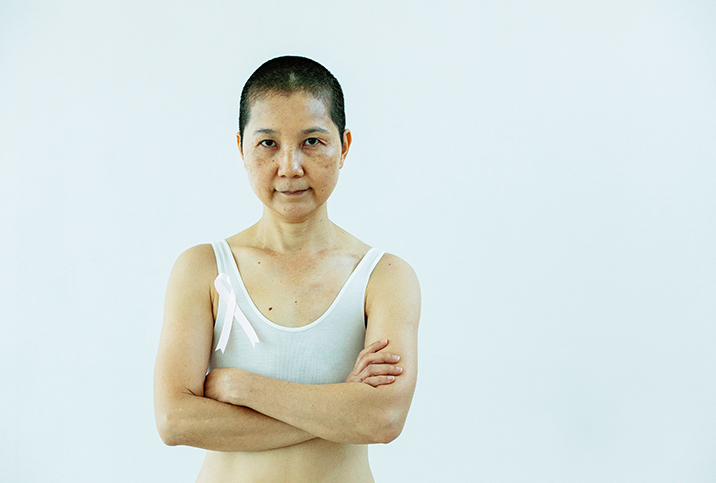Beyond the Pink Ribbons

Despite what the flood of pink-washed merchandise would lead you to believe, life after breast cancer doesn't tie neatly into a pretty pink bow. Survivorship comes with its own set of challenges. Breast cancer is one of the most common cancers in the United States, but in spite of the billions of dollars spent on research each year, there's no roadmap for life after treatment. And it's definitely not as simple as going back to your precancer life.
"Coming out of treatment, everyone's like, 'We want to celebrate you!' I never felt comfortable with that," said Mackenzie Dougherty, 35, who was diagnosed with stage 1 triple-negative breast cancer (TNBC) in March 2019 after her biannual breast exam. "It is really hard getting out of treatment and back into the real world. You lose your team, you lose your oncologist. You're just kind of pushed out like everything's OK—and you're supposed to make it OK."
To document her experience, Dougherty created IForgotIHaveCancer, a blog and Instagram account that fill the blank spaces between items on her cancer checklist, like the trauma of shaving your head or more mundane moments like a beach day to remind others that there can be some normalcy sprinkled into your new cancer life. Now, she uses it to connect with other breast cancer patients, many of whom share her feeling of loss and loneliness after treatment.
Dougherty's feeling of abandonment after completing a cancer to-do list isn't an isolated experience.
"I felt like I was on a patient conveyor belt," said Dana Donofree, the 39-year-old founder of AnaOno Intimates, a lingerie brand for anyone really, but especially for people who've undergone breast surgery or breast cancer treatment.
When diagnosed with stage 1 invasive ductal carcinoma at age 27, Donofree followed what she felt like was standard protocol for all breast cancer patients: surgery, followed by chemotherapy, then (if you could find a skilled surgeon and either afford or get insurance coverage) reconstruction, and regular scans to monitor the disease and possible recurrence.
Donofree says she has stopped counting the number of deaths among her friends; not because she wants to forget the people who helped her get through cancer, but because she chooses to focus on the joy.
But not all breast cancer patients mind the rigidity of their treatment plans. For Allie Brumel, 32, the patient conveyor belt is exactly what she needed to keep looking forward.
"It was like this long checklist of things to do to beat cancer and the first thing was freeze your eggs," explained Brumel, who was diagnosed with stage 2 TNBC shortly after her wedding in 2017. "And so that was like, OK, one thing down. We can move on to the next step."
As she checked each item off the list, however, Brumel wondered about life after cancer and sought out other patients close to her age to figure out her next steps. One of these steps was co-founding the Breasties, a free organization that hosts events connecting patients with each other, with physicians who specialize in certain techniques and, most importantly, with information.
Communities like this didn't exist when Donofree finished treatment and was looking to reclaim her life—and her body. It was 2010, she had just migrated from MySpace to Facebook, and the only other person she knew with breast cancer was in her early 50s. Although their circumstances didn't align, this woman dispensed crucial advice that transformed how Donofree approached recovery.
"I was newly diagnosed, nobody knew what to do with me…and she just said to me, 'Now is the time that you get to choose what works for you and what doesn't, and if it doesn't work for you, weed it out because this is your life,'" Donofree said. "And in that moment, I felt like she gave me permission to make the positive choices that I needed in an effort to stay hopeful."
It wasn't long before Donofree's quest for hope grew into AnaOno Intimates. Quickly, she realized most women who've undergone mastectomies, with or without reconstruction, struggle to find comfortable and beautiful lingerie. She tested her designs on women who lost an implant due to infection or didn't have their breasts reconstructed, women who use wearable prostheses like breast forms, and others who had implants similar to hers.
'I realized counting all of the friends that died from the same disease I had was not a positive outlook on my life…but I can choose to think of the best moments I had with that person.'
The bras and brand were ultimately the launchpad for a community of breast cancer survivors and previvors (people who undergo preventive mastectomies due to hereditary risk) to have difficult conversations together, but also some fun. Before the COVID-19 pandemic, Donofree partnered with #CancerLand to host an annual runway show during New York Fashion Week, bringing together people at all stages of breast cancer: survivors, previvors and those living with metastatic cancer. Donofree also works closely with Brumel's organization, the Breasties.
Naming the people she's met over her years of speaking up and for people affected by breast cancer, Donofree says she has stopped counting the number of deaths among them; not because she wants to forget the people who helped her get through more than a decade of survivorship and rebuild her life, but because, she said, she chooses to focus on the joy.
People who've met Donofree suggest she's not one to sugarcoat the realities of breast cancer, so choosing joy isn't just another saccharine pink bow.
"I realized counting all of the friends that died from the same disease I had was not a positive outlook on my life…but I can choose to think of the best moments I had with that person," Donofree said. "So that version of positivity, to me, is the way I manage and the way I get through being in this community for 10 years."
The hole of misery is there for any survivor to jump into breast-first. But these women—and hundreds like them—found ways to move forward and make life after cancer OK.


















